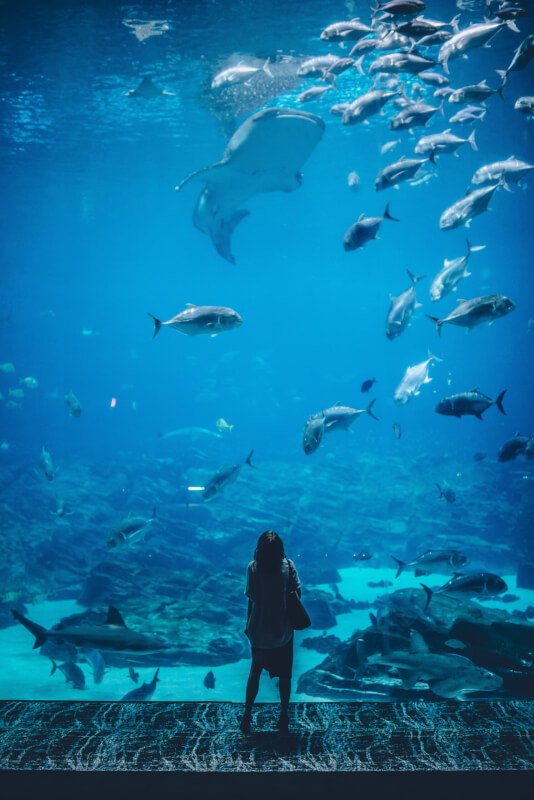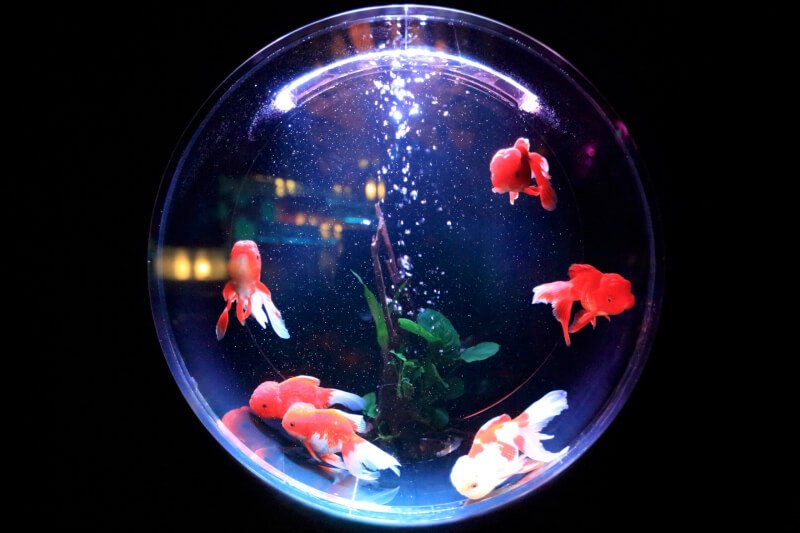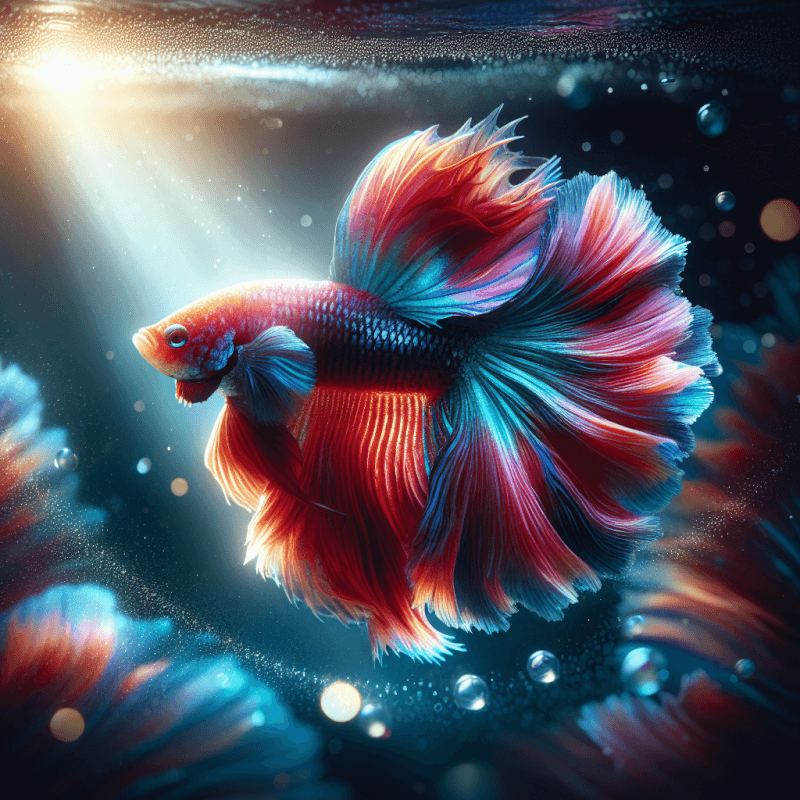Are you a fish enthusiast looking to add more aquatic friends to your tank but unsure of how many is too many? In this article, we will explore the fascinating world of fish population and help guide you in determining the perfect number of fish for your tank. With a focus on maintaining a healthy and balanced ecosystem, we will provide you with valuable tips and considerations to ensure the well-being of your finned companions. So, let’s dive in and discover the answer to the age-old question: “How many fish can I put in my tank?”
Choosing the Right Tank Size
Consider the Length, Width, and Height
When choosing the right tank size for your fish, one of the first factors to consider is the length, width, and height of the tank. These dimensions will determine the overall space available for your fish to swim and explore. It is important to provide enough horizontal swimming space for active fish species, as well as adequate vertical space for fish that prefer to swim at different levels of the tank.
Ready for Cat Trivia?
Test your knowledge about cats!

Think about the Fish Species
Different fish species have varying requirements when it comes to tank size. Some species, such as small tropical fish, can thrive in smaller tanks, while others, like large predatory fish, require much larger tanks to accommodate their size and swimming habits. Before making a decision, research the specific needs of the fish you plan to keep and choose a tank size that can meet those needs.
Consider the Growth Potential of the Fish
It’s essential to consider the growth potential of the fish you intend to keep when selecting a tank size. Juvenile fish may be small and seem suitable for a smaller tank, but if they have the potential to grow significantly, it’s important to provide them with the space they will need as adults. Failure to consider growth potential can result in overcrowding and stressed fish.
Factor in Decorations and Plants
While choosing the right tank size, it is crucial to consider the space occupied by decorations, plants, and other tank accessories. These elements not only enhance the visual appeal of your aquarium but also provide hiding spots and territory markers for your fish. Be mindful of the space these items will take up when determining the appropriate tank size for your fish.
Consider the Filtration and Oxygenation System
Another important aspect to consider when choosing the right tank size is the filtration and oxygenation system. A larger tank will generally require more powerful filtration and aeration equipment to maintain optimal water quality and oxygen levels. Adequate filtration and oxygenation are vital for the health and well-being of your fish, so ensure that the tank size can accommodate the necessary equipment.
Research the Minimum Tank Sizes for Specific Fish Species
To ensure the well-being of your fish, it’s essential to research the minimum tank size requirements for the specific fish species you plan to keep. Different fish species have different needs, and some may require larger tanks to thrive. By understanding the minimum tank size recommendations for each species, you can make an informed decision and provide the best possible environment for your fish.
Consider the Number of Fish You Prefer
The number of fish you prefer to keep in your tank is another factor to consider when choosing the right tank size. Some fish species are social and prefer to be kept in groups, while others thrive in solitude. Consider the desired number of fish you wish to have and their individual needs for space and interaction. A larger tank will generally provide more flexibility in terms of the number of fish you can keep. However, it is important not to overcrowd the tank, as this can lead to stress and health issues for your fish.
Fish Tank Capacity Calculation
Calculate Based on Fish Length
One method of calculating the capacity of your fish tank is to consider the length of the fish you plan to keep. As a general guideline, experts recommend providing at least one gallon of water per inch of fish length. For example, if you have a 12-inch fish, you would need a minimum of a 12-gallon tank to accommodate its size. This calculation method helps ensure that your fish have enough space to swim and maneuver comfortably.
Calculate Based on Fish Bioload
Another way to calculate the capacity of your fish tank is to consider the bioload of the fish you plan to keep. Bioload refers to the amount of waste produced by the fish, which directly impacts the water quality. As fish excrete waste, it generates ammonia, nitrite, and nitrate, which can be harmful to fish if not properly managed. By determining the bioload of your fish species, you can choose an appropriately sized tank with the capacity to handle the waste produced.
Calculate Based on Fish Swimming Patterns
Different fish species have different swimming patterns and activity levels. Some species are highly active and require more swimming space, while others are more sedentary and prefer to stay in one area. By considering the swimming patterns of the fish you plan to keep, you can choose a tank size that allows them to exhibit their natural behaviors without feeling cramped or restricted.
Consider the Surface Area of the Tank
In addition to considering the overall volume of the tank, it is also important to take into account the surface area. Fish rely on the surface of the water for gas exchange, which is essential for oxygenation. A larger surface area allows for better gas exchange, ensuring that your fish have an adequate supply of oxygen. Keep in mind that taller tanks may have a smaller surface area compared to tanks with a larger footprint.
Research Ideal Stocking Density for Specific Fish Species
To determine the appropriate tank size, it is crucial to research the ideal stocking density for the specific fish species you plan to keep. Stocking density refers to the number of fish that can be comfortably housed in a given tank size without causing stress or compromising water quality. By understanding the ideal stocking density for your fish species, you can make an informed decision and create a harmonious environment for your fish.

Fish Compatibility and Aggression
Research Fish Compatibility
Fish compatibility is an essential factor to consider when selecting tank inhabitants. Not all fish species get along well together, and incompatible tankmates may lead to stress, aggression, and potential harm. Research the compatibility of different fish species to ensure that they can coexist peacefully. Consider factors such as territorial behavior, social hierarchy, and preferred water conditions when choosing compatible tankmates.
Avoid Mixing Aggressive Fish Species
To maintain a harmonious aquarium, it’s generally best to avoid mixing aggressive fish species. Aggressive fish can become territorial and pose a threat to other tankmates, leading to stress and potential injuries. If you choose to keep aggressive species, ensure that you have a tank size and layout that allows for appropriate territory allocation and separation.
Consider the Natural Social Behavior of Fish
Fish have a wide range of social behaviors, from solitary to highly social species. It is important to consider the natural social behavior of the fish you plan to keep when selecting tankmates. Some fish species thrive in groups and may become stressed if kept alone, while others prefer solitude and can become agitated in the presence of others. By understanding the social behavior of your fish, you can choose tankmates that will coexist harmoniously.
Be Mindful of Territory and Hierarchy
Territorial behavior and social hierarchy can significantly impact the dynamics of your aquarium. Some fish species establish territories and may become aggressive towards tankmates that encroach upon their designated space. It’s important to understand the territorial tendencies of your fish species and provide enough space and properly designed tank layout to minimize conflict and aggression.
Avoid Overcrowding to Reduce Aggression
Overcrowding is a common cause of stress and aggression among fish. When the tank is overcrowded, fish may compete for resources, including food, hiding spots, and territory. To reduce aggression and promote a peaceful environment, avoid overstocking your tank. Maintain a balanced stocking density that allows each fish to have enough space and resources to thrive.
Water Parameters and Quality
Understand the Importance of Water Parameters
Water parameters play a crucial role in the health and well-being of your fish. Each fish species has specific requirements for factors such as pH, temperature, and water hardness. It’s important to understand the ideal water parameters for the fish species you plan to keep and maintain them within the appropriate ranges. Consistently monitoring and adjusting the water parameters will help ensure that your fish thrive in their environment.
Monitor Ammonia, Nitrite, and Nitrate Levels
Ammonia, nitrite, and nitrate are byproducts of fish waste and decomposing organic matter in the aquarium. These compounds can become toxic to fish if their levels are not properly controlled. Regularly monitoring ammonia, nitrite, and nitrate levels through water testing is crucial to maintain a healthy aquarium. If any of these compounds are detected in high concentrations, appropriate measures should be taken, such as water changes and filtration adjustments.
Consider pH, Temperature, and Hardness Requirements
Different fish species have varying preferences for pH levels, temperature ranges, and water hardness. It’s important to research and understand the specific requirements of the fish you plan to keep. Maintaining the proper pH, temperature, and water hardness levels will help create a stable and optimal environment for your fish’s health and growth.
Account for the Biological Load of Your Fish
The size and number of fish in your tank contribute to its overall biological load, which refers to the amount of waste produced and the demand for oxygen. Overstocking the tank or keeping fish species with high bioloads can overwhelm the filtration system and result in poor water quality. It’s necessary to consider the biological load of your fish and ensure that the tank size and filtration capacity can handle the waste produced.
Maintain Good Filtration and Regular Water Changes
Good filtration is crucial for maintaining excellent water quality in your aquarium. A well-functioning filtration system helps remove waste, excess nutrients, and harmful compounds from the water, creating a healthy and stable environment for your fish. Regular water changes are also essential to remove accumulated toxins and replenish essential minerals. Together, good filtration and regular water changes contribute to maintaining optimal water parameters and the well-being of your fish.

Consider the Bottom-Dwelling Fish
Include Appropriate Bottom-Dwelling Species
Including appropriate bottom-dwelling species is an important consideration when planning your aquarium. Bottom-dwelling fish, such as catfish and loaches, primarily inhabit the lower regions of the tank, feeding on the substrate and scavenging for food. These fish play a crucial role in cleaning up excess food and detritus, helping to maintain a clean and healthy environment.
Consider Space and Hiding Spots for Bottom-Dwellers
It’s important to provide enough space and hiding spots for bottom-dwelling fish to feel secure and comfortable. Some bottom-dwelling species require caves, crevices, or other hiding places to retreat to when they feel threatened. Consider incorporating appropriate decorations and tank layouts that provide ample hiding spots for your bottom-dwelling fish.
Ensure Compatibility with Other Tank Inhabitants
When selecting bottom-dwelling fish, it is vital to ensure their compatibility with other tank inhabitants. Some bottom-dwelling species may be peaceful and get along well with various tankmates, while others may be more territorial or aggressive. It’s important to research the compatibility of bottom-dwelling species with your desired tank inhabitants to create a harmonious and thriving aquarium community.
Schooling or Shoaling Fish
Understand the Nature of Schooling Fish
Schooling fish are known for their natural inclination to form large groups and swim together in coordinated movements. These fish can feel stressed or insecure when kept alone or in small numbers. Understanding the nature of schooling fish is important for creating an environment that meets their social needs and promotes their well-being.
Avoid Keeping a Single Schooling Fish
Keeping a single schooling fish can lead to stress and a loss of their natural behaviors. It’s recommended to keep schooling fish in groups or schools to provide them with the social interaction they need. The specific group size varies depending on the species, so research the ideal group size for the schooling fish you plan to keep.
Determine the Ideal Group Size for Schooling Species
Different species of schooling fish have different preferences for group size. Some species may require larger groups, while others may thrive in smaller ones. Research the specific requirements of the schooling fish you plan to keep and ensure that your tank size can accommodate the recommended group size.
Provide Sufficient Space and Proper Environment for Schooling
Schooling fish rely on open spaces for their coordinated swimming behavior. It’s crucial to provide sufficient horizontal swimming space for them to move freely and exhibit their natural behaviors. Additionally, proper hiding spots and suitable tank decorations can create a sense of security for schooling fish. Consider these factors when designing your aquarium to ensure an optimal environment for your schooling fish.

Fish Growth and Lifespan
Consider the Adult Size of Fish Species
When planning your aquarium, it’s important to consider the adult size of the fish species you plan to keep. Some fish species may start small but have the potential to grow significantly as they mature. If you choose to keep such species, be prepared to eventually provide them with a larger tank to accommodate their size.
Research the Growth Rate and Lifespan
Researching the growth rate and lifespan of the fish species you plan to keep is important for long-term tank planning. Some species may reach their maximum size within a few years, while others continue to grow slowly throughout their lives. Understanding the growth rate and average lifespan of your chosen fish species will help you anticipate when a tank upgrade may be necessary.
Account for the Potential Need to Upgrade Tank Size
As your fish grow, they may outgrow their initial tank and require a larger living space. It’s important to account for the potential need to upgrade your tank size in the future. Planning ahead will save you the hassle of having to transfer your fish to a new tank prematurely, minimizing stress for both you and your fish.
Be Prepared to Rehome or Reallocate Fish
In some cases, fish may outgrow their tank to the point where it becomes impractical or impossible to provide a suitable living space. When this happens, it’s necessary to be prepared to rehome or reallocate the fish to a more suitable environment. Responsible fishkeeping involves prioritizing the well-being of your fish and making the necessary adjustments to ensure their health and happiness.
Avoiding Overcrowding and Stress
Recognize the Risks of Overcrowding
Overcrowding is a common issue in fishkeeping that can have detrimental effects on fish health and well-being. When a tank is overcrowded, there is an increased competition for resources, such as food, shelter, and territory. This can lead to stress, aggression, poor water quality, and an increased risk of disease.
Understand the Negative Effects of Stress on Fish
Stress can significantly impact the health and behavior of fish. It weakens their immune systems, making them more susceptible to diseases. Stressed fish may exhibit behavior changes, such as loss of appetite, increased aggression, or lethargy. To provide your fish with the best possible environment, it’s crucial to reduce stress factors, including overcrowding.
Maintain a Balanced and Harmonious Environment
To avoid overcrowding and reduce stress, it’s important to maintain a balanced and harmonious environment in your aquarium. Choose tankmates that are compatible and have similar requirements in terms of water parameters, swimming patterns, and social behavior. By providing enough space and resources for each fish, you can create a healthy and stress-free environment.
Consider the Indicators of Stress in Fish
As a responsible fish owner, it’s important to be able to recognize the indicators of stress in your fish. Stress can manifest in various ways, including reduced appetite, abnormal swimming patterns, changes in coloration, or visible signs of aggression. By regularly observing your fish and identifying signs of stress, you can take appropriate measures to address the underlying causes and improve their well-being.
Avoid Overstocking to Promote Fish Health
One of the most effective ways to prevent overcrowding and reduce stress is to avoid overstocking your tank. Determine the appropriate stocking density for your fish species based on their size, bioload, and specific needs. By respecting the space requirements of your fish and maintaining a healthy stocking density, you can promote their overall health and well-being.

Other Considerations
Research Specific Requirements of Fish Species
In addition to the factors discussed above, it’s important to research the specific requirements of the fish species you plan to keep. Some fish have unique needs, such as specialized diets, specific water parameters, or compatibility with certain tankmates. By understanding and meeting these requirements, you can ensure the optimal health and happiness of your fish.
Learn from Experienced Aquarists
Learning from experienced aquarists can be invaluable when it comes to understanding the intricacies of fishkeeping. Joining online forums, attending aquarium club meetings, or seeking advice from knowledgeable individuals can provide valuable insights and tips for successful aquarium management. Experienced aquarists can offer guidance specific to the fish species you plan to keep and share their experiences to help you avoid common pitfalls.
Consider the Compatibility of Tank Inhabitants
When selecting fish for your aquarium, it’s crucial to consider the compatibility of all tank inhabitants. This includes not only fish but also other living organisms, such as snails, shrimp, or live plants. Some fish may prey on smaller tankmates, while others may disturb or uproot plants. Ensure that all tank inhabitants can coexist peacefully and contribute positively to the overall ecosystem of your aquarium.
Maintain a Healthy Balance of Fish and Other Tank Elements
To create a well-balanced aquarium, it’s important to maintain a healthy balance between the fish and other tank elements. Provide adequate hiding spots and plants for fish to seek refuge or establish territories. Consider the maintenance needs of the tank inhabitants and allocate enough time for regular cleaning, water changes, and feeding. By maintaining this balance, you can create a beautiful and thriving aquarium environment.
Conclusion
When it comes to choosing the right tank size for your fish, several factors must be considered. The length, width, and height of the tank should provide enough space for your fish to swim and explore comfortably. Consider the specific needs and growth potential of the fish species you plan to keep, ensuring they have enough space as they mature. Factor in decorations and plants, as well as the necessary filtration and oxygenation system.
Research the minimum tank sizes for the specific fish species to ensure their well-being. Calculate the tank capacity based on fish length, bioload, swimming patterns, and the surface area of the tank. Consider fish compatibility and aggression, adapting to the natural social behavior of the fish and avoiding overcrowding.
Maintaining optimal water parameters and quality is crucial for fish health. Understand the importance of water parameters, monitor ammonia, nitrite, and nitrate levels, and provide the necessary pH, temperature, and hardness requirements. Consider the bottom-dwelling and schooling fish, accommodating their needs for space, hiding spots, and social interaction.
Plan for fish growth and lifespan, being prepared to upgrade tank size or rehome fish if needed. Avoid overcrowding and stress by recognizing the risks and negative effects, maintaining a balanced and harmonious environment. Research the specific requirements of your fish species, learn from experienced aquarists, and consider the compatibility of tank inhabitants. Strive for a healthy balance of fish and other tank elements to create a beautiful and harmonious aquarium.
By following these guidelines and prioritizing fish health and well-being, you can create a thriving and enchanting underwater world for your fish to enjoy.



